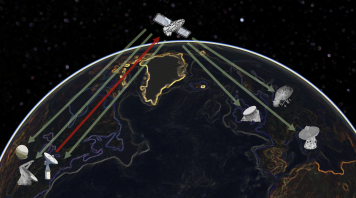The idea is to investigate the potential of a long baseline multistatic radar system for space situation awareness. Specifically, the examined system comprises a ground based radar operating as monostatic active radar, i.e. both transmitter and receiver located closely, while remote radio frequency telescopes are used as passive receivers to capture reflections of spaceborne targets in bistatic radar configurations. The advantage of such a system is that multiple observations of a target can be acquired from a single transmission point. Furthermore, by exploiting multiple remote receivers the target can be observed from different aspect angles which can be extremely beneficial for detection and identification purposes. To this date, the system has been realised using Millstone Hill Radar (MHR) and Tracking & Imaging Radar (TIRA) as monostatic transceivers and radio telescopes located in Europe (UK, Netherlands and Italy) as receivers. While preliminary acquisitions of geostationary satellite targets have demonstrated the ability to detect targets in this configuration, the capabilities of the multi-static system have not been investigated yet. This project will demonstrate the space situation awareness capabilities of a long baseline multistatic radar system repurposing existing facilities and investigate novel target behavioural analysis tools for such sensor configuration. The project will exploit an existing experimental long baseline bistatic radar campaign carried out under the NATO-SET 293 "RF Sensing for Space Situation Awareness" RTG to assess the system's performance and accurately model more complex simulated scenarios. Aim of the research is to demonstrate the benefits of such peculiar configuration while developing advanced processing techniques to handle intrinsic challenges. Unlocking the potential of distributed sensing, this project can have a significant impact in advancing additional capabilities such as target behavioural analysis.

